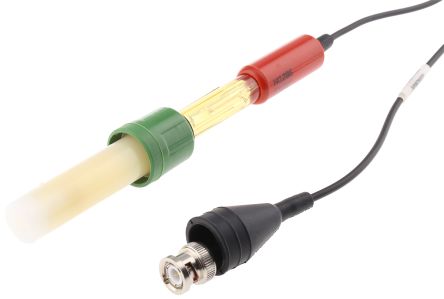The pH value of a solution, whether it’s the water in a lake or the saliva in our mouth, provides an invaluable insight into its acidity or alkalinity. Central to the determination of this value is an unassuming, but highly sophisticated tool: the pH probe. In this article, we’ll delve into the inner workings of pH probes and unravel the science behind them.
A Primer on pH: The Scale of Acidity and Alkalinity
Before delving into pH probes, it’s crucial to understand what pH means. pH stands for “potential of hydrogen.” It’s a logarithmic scale used to measure the concentration of hydrogen ions (H+) in a solution. The pH scale ranges from 0 to 14:
- Acidic Solutions (pH < 7): These have a higher concentration of H+ ions. Examples include vinegar and lemon juice.
- Neutral Solution (pH = 7): Pure water is neutral, having an equal concentration of H+ ions and hydroxide (OH-) ions.
- Alkaline Solutions (pH > 7): These have a lower concentration of H+ ions. Examples are baking soda and bleach.
The Hero of the Tale: The pH Probe
A pH probe, also known as a pH electrode, is a device used to measure the pH of a solution. Its design consists of a sensitive glass bulb at the end of a long shaft. This bulb is what comes into direct contact with the solution being measured.
The Magic within the Glass Bulb
The sensitive bulb of a pH probe is filled with a buffer solution of known pH, typically around pH 7. The exterior of the bulb comes into contact with the sample solution, leading to the exchange of ions.
When the bulb is immersed in a solution, the concentration of H+ ions outside the bulb either increases or decreases, compared to the inside. This ion difference creates an electrical potential difference across the glass membrane, which is proportional to the pH of the solution.
The Reference Electrode: Stability in Measurement
A pH measurement is essentially a comparison. The sensitive bulb forms one half of this comparison. The other half is a reference electrode, which remains constant and provides a stable voltage against which the sensitive bulb’s voltage can be compared. When combined, these two electrodes form a complete electrical circuit.
Translating Voltage to pH: The pH Meter
The electrical potential difference generated by the pH probe is sent to a pH meter. This device translates the voltage difference into a pH reading. The logarithmic nature of the pH scale means that every unit change in pH represents a tenfold change in H+ ion concentration. Advanced pH meters can compensate for temperature, as the response of the probe can be affected by it.
Calibration: Ensuring Accuracy
Just like a weighing scale needs to be set to zero before weighing an object, a pH probe needs calibration. Over time, the response of the probe might drift. By calibrating the probe using solutions of known pH (buffer solutions), one can ensure the accuracy of readings.
Applications: Beyond the Science Lab
While many of us associate pH probes with school science experiments, their applications are vast and varied:
- Medicine: pH meters are used to monitor blood pH, which is typically close to 7.4. Any significant deviation can be life-threatening.
- Agriculture: Soil pH profoundly affects plant health. By monitoring soil pH, farmers can adjust conditions for optimal crop yield.
- Food & Beverage: From wine-making to cheese production, the pH value plays a crucial role in determining taste, texture, and safety.
- Environmental Monitoring: Assessing the pH of natural water bodies helps detect pollution and understand aquatic ecosystems.
Conclusion
The unassuming pH probe, with its delicate glass bulb and sleek design, plays an indispensable role in countless areas of science and industry. By understanding the foundations of its function and its broader applications, we gain a deeper appreciation for the intricate balance of acidity and alkalinity in the world around us. Whether you’re a professional in the field or just an enthusiast, the next time you come across a pH measurement, remember the science and sophistication behind that simple number.


